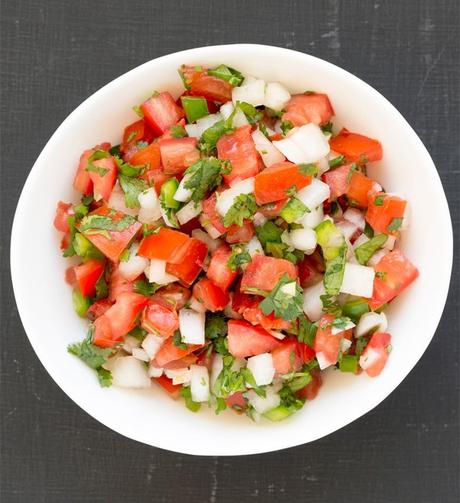
If you are a fan of Mexican food, you are probably aware that Mexican dishes are one of the most enjoyed cuisines in the world. The Spanish settlers imparted culinary knowledge of some ingredients and cooking techniques around the 15th Century to the Mexicans. From fresh and finely chopped vegetables and vibrant, luscious fruits to dried herbs and robust spices, the dishes are full of flavors and earthy aromas.
Enter pico de gallo, also known as salsa fresca, salsa bandera, and salsa cruda; this particular flavorful salsa can be traced back to the Aztec cuisine from the regions of Mexico, like the Yucatan Peninsula. So, what in the world is Pico de Gallo, where does it come from, and what does it taste like? Well, let's find out!
What Is Pico De Gallo?
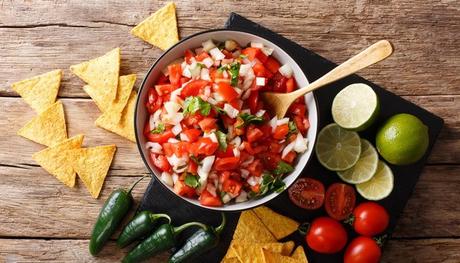
Call it a sauce or a dip, it goes well with everything. It is a nutritious bowl of fresh and colorful ingredients that you enjoy with your favorite Mexican dishes.
The traditional recipe of pico de gallo consists of chopped tomatoes and onions, serrano peppers, and cilantro with lime juice and salt.
This delicious blend of ingredients can be enjoyed with tortilla chips or nachos or really with anything you like. It can be enjoyed wholeheartedly by folks with diabetes and those who are weight conscious because it has no fat. Moreover, it's also rich in vitamin C, phosphorus, and potassium.
Where Does Pico De Gallo Come From?
There are quite a few theories about where the name or the dish originates. Some believe that because of its bright and vibrant colors, the dish represents the Mexican national flag showcasing green, red, and white colors.
This is why this dish is known as "Salsa Bandera," meaning flag salsa. That's by far the closest and most prominent theory that can be linked to the dish's origins.
Other theories include its origins dating far back to the ancient Aztec cuisine or from an old way of eating it with a thumb and a forefinger, making it look like a chicken or rooster's face. Hence the name, Pica De Gallo, when translated into English, is "rooster's beak."
What Does Pico De Gallo Taste Like?
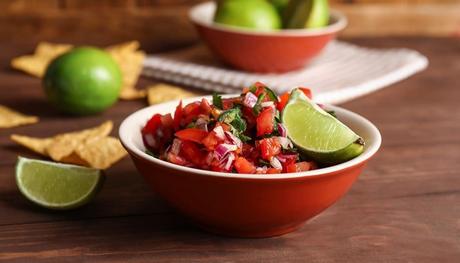
Pico De Gallo consists of chopped and diced vegetables in a bowl with a hint of that lime juice, that flavor hitting your taste buds with a zap. There's not just one flavor to this dish but multiple.
When the flavors roll onto your tongue, it gives you that spicy, tangy, and salty taste but also a tad bit of sweetness. The taste of Pico de gallo is generally mild, but sometimes jalapenos are added to give it a spicy kick.
The juiciness of tomatoes, along with those crunchy onions, provides a great texture contrast. When paired with pickled jalapenos, fresh cilantro, and lime, the ingredients get an instant pucker and sourness.
Additional spices, seasoning, and vegetables can also be added according to individual taste and preference.
Pico De Gallo Vs. Salsa: What Are The Differences?
Pico de gallo is a member of the salsa family. The most apparent difference between pico de gallo and salsa is that the latter is a smooth, pureed texture, where all the ingredients are mashed and processed together to make the dish enjoyed in a thick liquid form.
Conversely, pico de gallo is enjoyed with vegetables chopped in fine dice to get that crunchy mouthful while eating it. Pico de gallo is a dish made with limited yet only fresh vegetables, unlike salsa which can be made with more ingredients like cooked or canned tomatoes.
Moreover, salsa is more liquid than pico de gallo, even when made with a chunkier version of tomatoes. It's relatively wetter and has a runny consistency than the fresh pico de gallo. Apart from this, salsa is often cooked and served warmly, while pico de gallo is usually served fresh and uncooked and sometimes served chilled.
How to Eat Pico De Gallo?
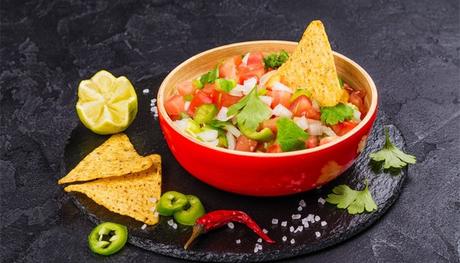
To get the most out of pico de gallo, there are quite a few ways to enjoy this Mexican dip. The most notable and famous way to eat pico de gallo is scooping some of it and topping it on your tostadas, burritos, tacos, and even in your quesadilla varieties.
You can also mix it up with some beans and quinoa salad or eat it with pita bread. Or add it to your guacamole and have it with your tortilla chips. It can even be topped on your hummus to make a nutritious and fulfilling evening snack.
Is Pico De Gallo Healthy?
Pico de gallo is made with fresh and nutritious vegetables, so it shouldn't be that hard to believe that it's super healthy and loaded with health benefits. Since it is a low-calorie dip, you can enjoy it even on a diet.
Incorporating this delicious snack into your diet regimen will aid weight loss while helping you get all the vital nutrients and vitamins. The onions and tomato-rich pico de gallo has the power to fight against heart diseases by reducing blood pressure and acting as a blood thinner.
Pico de gallo also contains antibacterial and anti-inflammatory properties and helps prevent prostate, urinary, and other forms of cancer.
How Long Does Homemade Pico De Gallo Last?
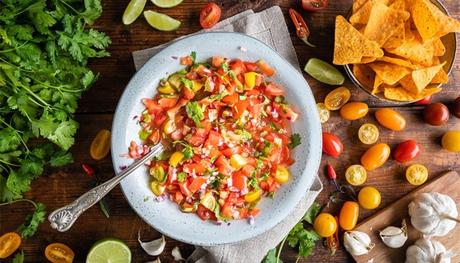
For the best results, pico de gallo is served best as soon as it is made. You can leave it on the counter for half an hour and then serve it with a slotted spoon to drain all the tomato juice.
If you're not eating it right away, just keep it in the fridge, it can last for 4 days. Make sure to keep it covered or store it in an air-tight container. The acidity often mellows down, so when you serve, add a fresh hit of lime juice to retain the flavors.
Can You Warm Up Pico De Gallo?
Pico de gallo is often served fresh at room temperature or enjoyed slightly chilled or cold straight from the fridge. So there is no need to warm up pico de gallo unless you want to. If you do, you'll probably end up with a warm version of pico de gallo where the ingredients are cooked and served warm. In that case, the ingredients aren't as fresh as the typical pico de gallo.
